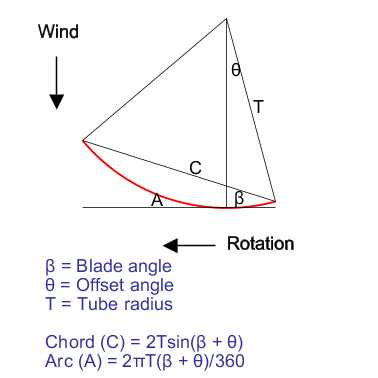

The force on each axis is calculated with the change of momentum at each axis. Additionally, the wind turbine blade is rotating with a tip velocity of 90 m/s, which is parallel to the z-axis when the blade tip passes through the top and bottom of the rotation.

In that frame of reference, the velocity of a raindrop the moment before impacting the blade is v x = 20 m/s, v y = 8 m/s. Assume the x-axis is the horizontal axis (along the wind), the y-axis is the vertical and z is perpendicular to the x- y plane. It is possible to calculate the force (average and peak) of impact using the following calculation. It has been also observed that careful handling of the blade during manufacturing, transport and installation is essential to avoid small tears or scratches that may act as initiation sites for further wear and erosion. Leading edge erosion can be a result of rain, with the raindrops’ kinetic energy, diameter, temperature and sea salt content being critical parameters. Likewise, at near-shore locations, the issue of sand erosion may be a considerable threat.

In warm and arid climates, sand and dust may be a common type of airborne particulate and therefore may pose leading edge erosion problems, whereas in wetter, greener habitats, the problem may be non-existent. As with all forms of environmental exposure, leading edge erosion is heavily site-dependent. Leading edge erosion can become an issue after only 2 years of turbine operation, much sooner than expected, with the tip being most susceptible to wear, but with erosion also exhibited on the more inboard portions of the blade. To avoid this probability, wind turbines should be sited properly, with adequate distances between them, accounting also for the prevailing wind direction, so as to ensure maximum efficiency and minimum impact on the normal atmospheric boundary layer. The aerodynamic shading also constitutes another source of fatigue due to unsteady mechanical loads imposed by turbulent wind flow and shear effect. This can occur in the case of short distances between the wind turbines and, of course, depending on the wind flow direction and the wind turbines’ relevant positions. The term “aerodynamic shading” refers to the unpleasant situation of one wind turbine being inside the wake of another. Behind the wind turbine’s rotor, the wind flow exhibits roughly 40% reduced kinetic energy and increasing turbulence relative to the initial, unaffected flow. Apart from the available land morphology, the wind flow on a wind turbine can be significantly affected by any physical or technical obstructions, such as, most commonly, the other wind turbines in the same wind park.


 0 kommentar(er)
0 kommentar(er)
